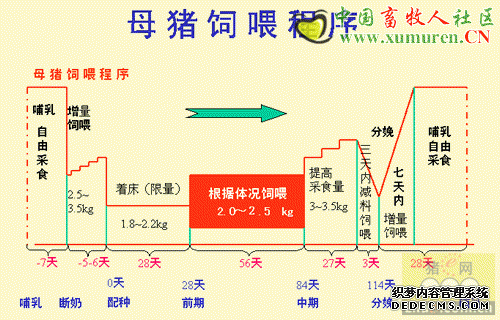Incoming supply voltage may be a lot lower than you expect, and may well make equipmentwork less well, or less efficiently. But at least the electricity supplier is paying for the losses upto your farm. Losses within your farm, you pay for. Worth bearing in mind that it's voltage dropas a proportion of the original voltage. 6V in 240V is 2.5%; 6V in 220V is 2.7%.
How to minimise voltage drop
Use larger cablesSpread the loadDivide the loadReduce load where it doesn't affect performanceImprove controlDemand Side Management
The simplest and most obvious way is to use larger cables. Volt drop may or not justifyreplacing existing cables, but it's certainly worth thinking about going up a cable size whenyou have new supplies installed.
When you ask an electrical contractor for his "best price" for a job, you can't really expect himto fit larger cables than are required by the regulations. 2.5% drop may be "acceptable", butit's not necessarily the best choice for the farm.
The longer the cable, the bigger the cost difference, and the more tempting to go for theminimum size. If the difference is ? a metre, it's not a lot of money on a wiring job with a 10metre cable run, but then there is not a big volt drop in a 10 metre run. But a ?00 costdifference looks a worthwhile saving on a job with a 200 metre run. Don't expect an electricalcontractor to size up the cable to minimise your power losses and price himself out of the job.
As you can see from the table on the previous page, it doesn't take long for a bigger cable topay for itself. Or, conversely, it doesn't take long for the "least cost" cable size to cost you all the money you saved on the installation.
In fact, there are many installations around the country where voltage drop hasn't even beenconsidered. Cables have been sized on the basis of nominal maximum current. (Which is whyso many pig farms have far greater voltage drop than they should.) It's worth being aware thatthe maximum rated current of a cable is based on its ability to lose heat. That is, if a cable isoperating at its maximum rated current, it will be warm, so it will be losing a lot of power.
Spreading large loads across different phases also pays dividends. This means the current iscarried by several conductors, so for any given electrical load, the volt drop is reduced.
Dividing large loads into several stages is beneficial since, in most cases, full power is notneeded for most of the time. For example, a particular room might have 10kW of heatingcapacity (for maximum demand) but for most of the time 5kW or less is needed. Dividing theheating into two stages (of 5kW) doesn't reduce the heating needed - to deliver the sameamount of heat, it would be on for twice the time - but it does mean a lower voltage drop whenit is on.
Reducing the electrical load where you can - by using higher efficiency equipment - reducesthe voltage drop for other equipment where, perhaps, you can't reduce energy use. Lowenergy bulbs produce more light per unit of electricity than tungsten bulbs. They are moreefficient, so they save energy. But resistance heaters can't be made much more efficient. Itdoesn't matter how you do it, it takes a kWh of electricity to produce a kWh of heat. However,if you fit low energy bulbs, it reduces the total electrical load, which reduces the voltage drop,so more electricity gets to the heater, and less is lost in the cable. So a saving in one placehelps with savings in another.
When looking at this sort of change, you have to consider whether it has an impact onproduction. Fitting smaller heaters, say, doesn't mean lower electrical consumption if it meansthat pigs struggle to put on weight.
Clearly, the above techniques should be considered, especially in new installations, but majorrewiring or extensive equipment replacement can be expensive and pay back - thoughworthwhile - a long time coming. More immediate and cost effective volt drop reductions mayoften be achieved by improved control methods.
Most of the heavy electrical loads are to a greater or less extent automatically controlled, andmost are not used, or not used fully, for most of the time. Improved control methods can beused to try to reduce the amount of time that heavy loads are on at the same time.
To make an analogy - if you have to boil two kettles, you will get less volt drop, and thereforepay for less electricity, if you boil one and then boil the other (so there is only one on at atime) rather than boil them both together.
For some equipment, this might be quite easy. For example, most ad lib feeding systems runon timers - they are permitted to run at certain times of the day. Instead of having all thefeeding systems running at 10 am, you might set one to run at 10 am, another at 10:15,another at 10:30 and so on. Or, rather than setting them so they run just once or twice a day,run them more often. This means they run for a shorter time, so they are less likely tocoincide with other electrical loads.
声明
来源:互联网
本文地址:http://farm.00-net.com/yz/zhu/5/2007-09-20/142446.html








